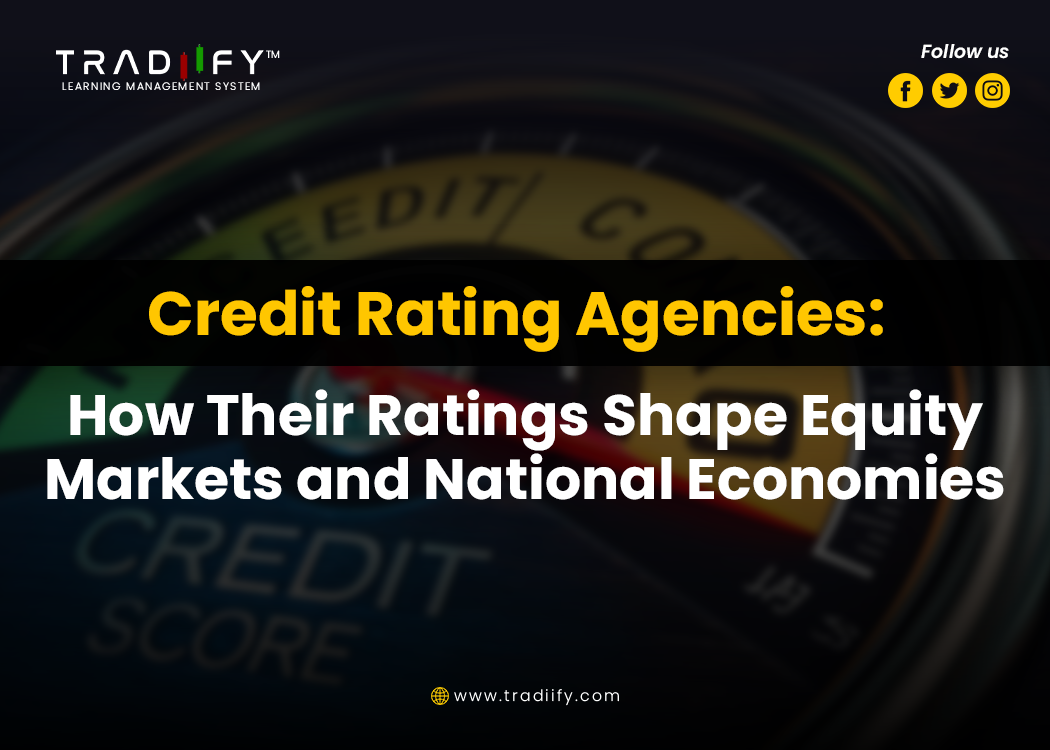
In today’s interconnected financial world, credit rating agencies (CRAs) play a pivotal role in shaping investor confidence and capital flows. Their ratings not only determine the cost of borrowing for companies and governments but also influence global equity markets and national economic stability.
What Are Credit Rating Agencies?
Credit rating agencies are institutions that evaluate the creditworthiness of borrowers—ranging from corporations to sovereign nations. The most recognized agencies are Moody’s, Standard & Poor’s (S&P), and Fitch Ratings. Their ratings serve as benchmarks for investors when assessing the risk of debt instruments and equity-linked securities.
How Ratings Influence Equity Markets
Investor Sentiment: A downgrade can trigger panic selling, while an upgrade boosts investor confidence.
Stock Market Volatility: Ratings announcements often cause sharp movements in equity indices.
Capital Flows: Foreign institutional investors (FIIs) closely track ratings before committing funds to emerging markets.
Sectoral Impact: Downgrades in one sector (e.g., banking) can ripple across related industries.
Impact on National Economies
Cost of Borrowing: Sovereign downgrades raise government bond yields, increasing borrowing costs.
Currency Stability: Negative ratings can weaken a nation’s currency, making imports costlier.
Investment Climate: Ratings guide global investors and multilateral institutions in allocating funds.
Economic Growth: Prolonged negative outlooks can stall infrastructure spending and FDI inflows.
Global Case Studies
India: Ratings upgrades have historically boosted foreign investments and stock market indices.
United States (2008): The downgrade of U.S. debt shook global markets, showcasing CRAs’ influence.
Greece (2010 Debt Crisis): Continuous downgrades worsened its sovereign debt crisis and forced bailout interventions.
Criticism & Challenges
Conflict of Interest: CRAs are paid by the issuers they rate, raising questions of bias.
Pro-Cyclicality: Downgrades during crises often worsen financial instability.
Limited Transparency: Rating methodologies are not always fully disclosed.
Global Power Imbalance: A few Western-based agencies dominate the entire system.
Future Outlook
The future of credit ratings lies in greater transparency, regulatory oversight, and the rise of domestic rating agencies in emerging markets. With the increasing use of AI, big data, and ESG (Environmental, Social, and Governance) metrics, the credit rating landscape is expected to evolve significantly.
Conclusion
Credit rating agencies remain powerful gatekeepers in global finance. While their ratings shape equity markets and national economies by guiding investment flows and borrowing costs, their influence also calls for accountability and reform. For investors, policymakers, and businesses alike, understanding how CRAs work is essential to navigating today’s dynamic financial ecosystem.
Comments (0)
Categories
Recent posts


Getting Started with Tradiify LMS: A ...
1 Aug 2024.jpg)
How Tradiify LMS Supports Continuous ...
1 Aug 2024
5 Ways an LMS Can Revolutionize Your ...
1 Aug 2024




